Embracing Shadows in Architectural Photography: The Art of Light and Dark
Why Shadows Matter in Architectural Photography
Shadows often get a bad rap in photography, especially among beginners who strive for evenly lit images. However, in architectural and design photography, shadows are not just inevitable—they’re essential. They add depth, drama, and a sense of realism that can transform a flat image into a compelling visual story. I shoot a lot of Interior Design Photography in the Western part of the country. My clients understand this and expect me to deliver on it, every time.
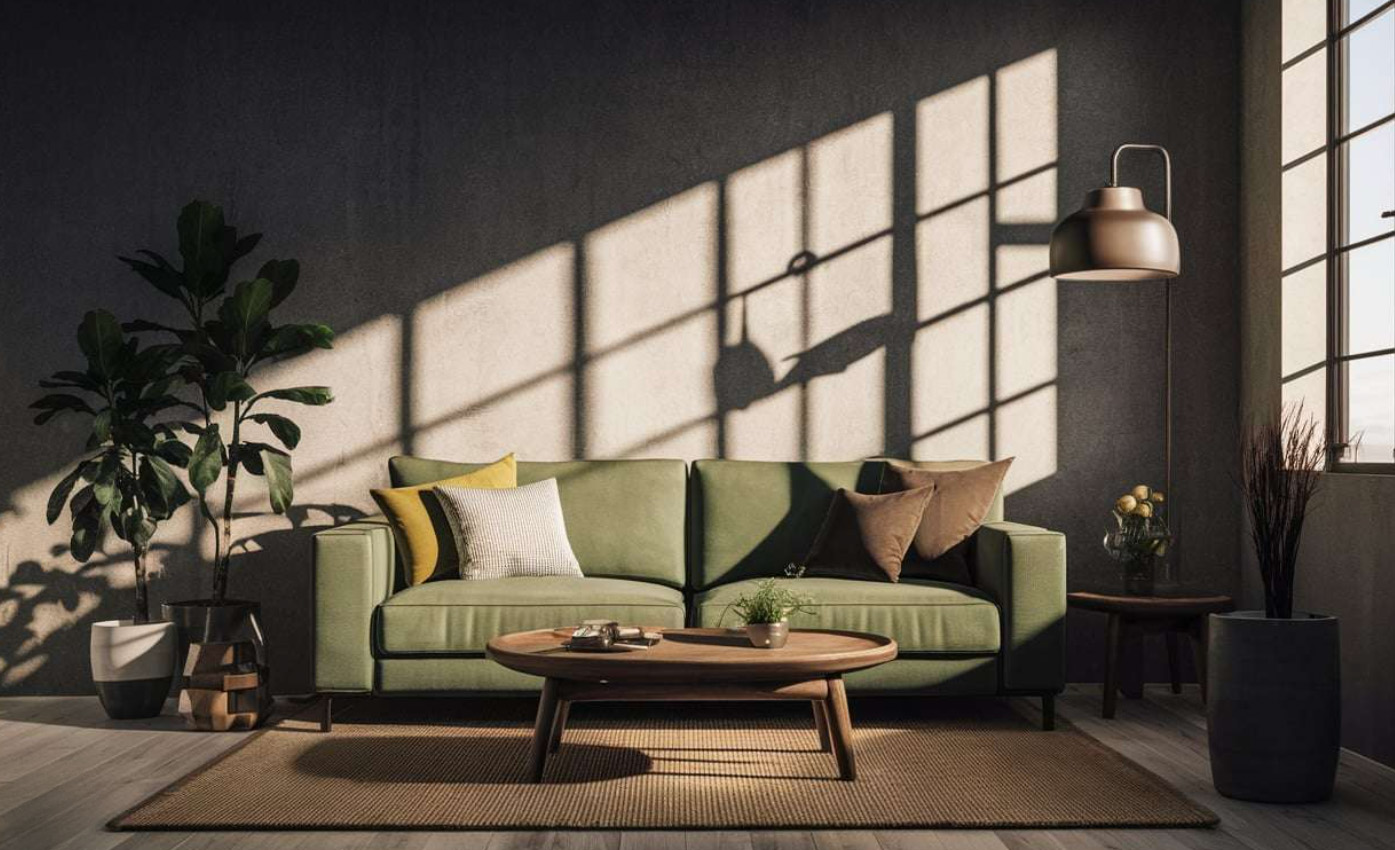
The Role of Shadows in Architectural Photography
In architectural photography, shadows serve several key functions:
- Defining Structure and Form: Shadows highlight the geometric features of a building, emphasizing its form and structure.
- Adding Depth and Dimension: The interplay of light and shadow creates a three-dimensional effect, making the image more engaging.
- Creating Mood and Atmosphere: Shadows can evoke various emotions, from mystery to tranquility, depending on their intensity and placement.
Highlighting Textures and Materials: Shadows accentuate the textures of materials like brick, stone, and metal, revealing their true character.
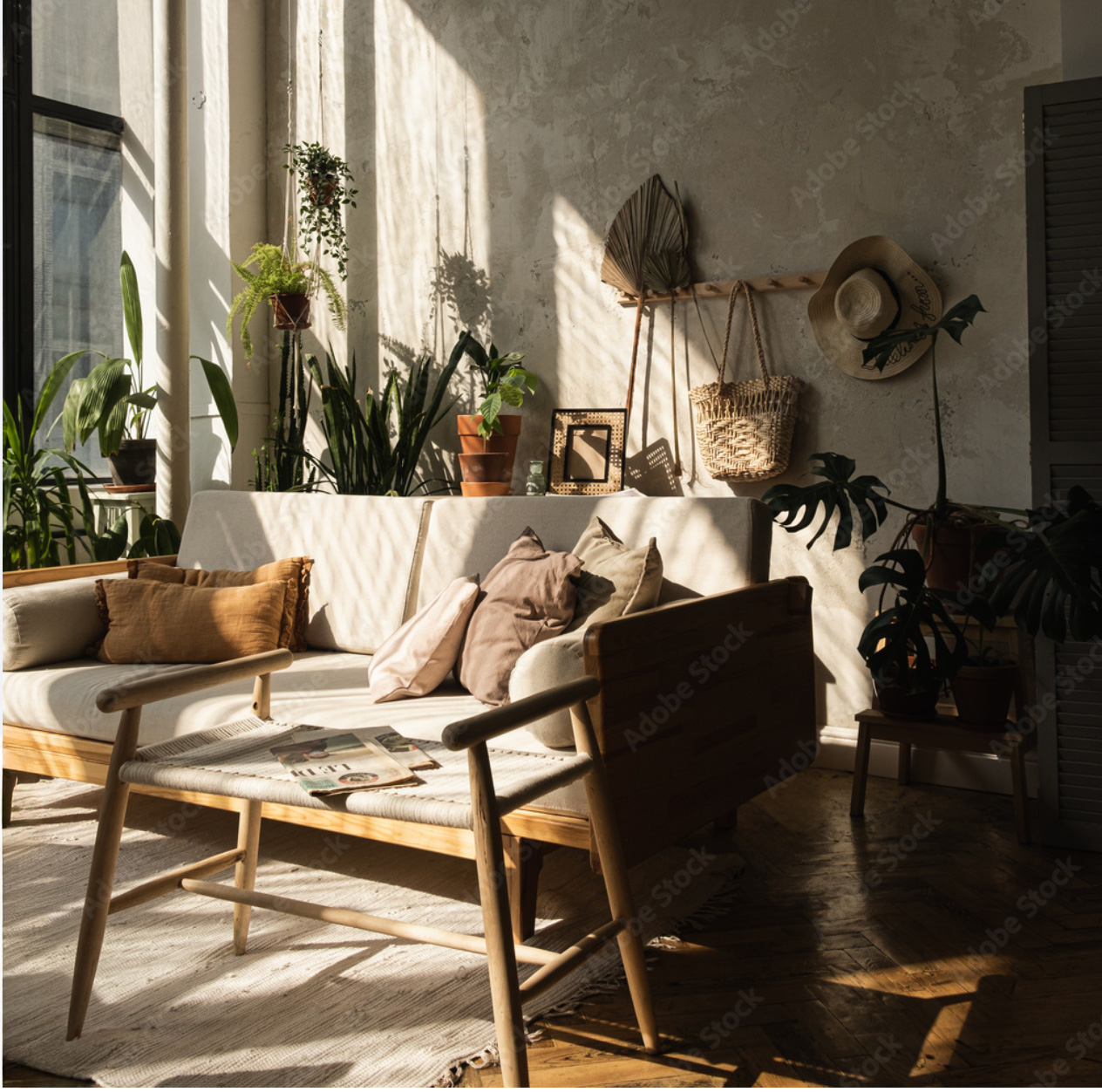
Architectural Photography vs. Real Estate Photography: The Key Differences
The primary goal of real estate photography is to present properties in a way that appeals to potential buyers. This often means using wide-angle lenses and ample lighting to make spaces appear larger and more inviting.
In contrast, architectural photography delves deeper into the artistic representation of structures, focusing on design elements, materials, and the interplay of light and shadow to convey the architect’s vision.
As noted in an article from the Architectural Photography Almanac, “For a real estate photographer, the purpose of the images is to sell the property. For an architectural photographer, the purpose is to showcase the design, form, and function of the building.” (apalmanac.com).
A lot of this also boils down to the fact that you have to know your client and what they are expecting. A “real estate shoot” is a very different expectation from go with a typical client. 40 plus shots, every angle possible, super-wide angles, and NO shadows! They usually want everything big an bright. Architecture and design photography shoots are different. So when in doubt, TALK with you clients about what they are looking for as an end product before you start shooting anything!!
Learning from the Masters: Insights from Renowned Photographers
Brandon Barre, a distinguished architectural photographer, emphasizes the importance of lighting and shadows in his work. In his documentation of the Waxwing House, he highlights the “interplay of light and shadows” as a critical component of his composition. (apalmanac.com) Also, in a recent Youtube interview Brandon did with another exceptional Architectural Photographer, Shawn Talbot, Brandon recalled a famous Hollywood cinematographer saying that every good image has something completely white and something completely black. These points make everything else in the image come alive. I couldn’t agree more. Click here for a link to the YouTube video with Brandon.
Mike Kelley, another prominent figure in architectural photography, often discusses the significance of understanding light dynamics. In an interview, he mentioned the intrigue in photographing architects’ homes, noting the unique design decisions and how light interacts within those spaces. Mike’s instagram is here. CLICK


Techniques for Embracing Shadows
Timing: The Golden Hours
One of the most effective ways to harness the power of shadows is by shooting during the “golden hours”—shortly after sunrise or before sunset. During these times, the sun is low in the sky, casting long, soft shadows that add depth without harshness.
I remember a shoot in Park City where I arrived just before dawn. As the sun rose, it cast a warm glow over the modern home I was photographing, creating elongated shadows that beautifully highlighted the structure’s clean lines.
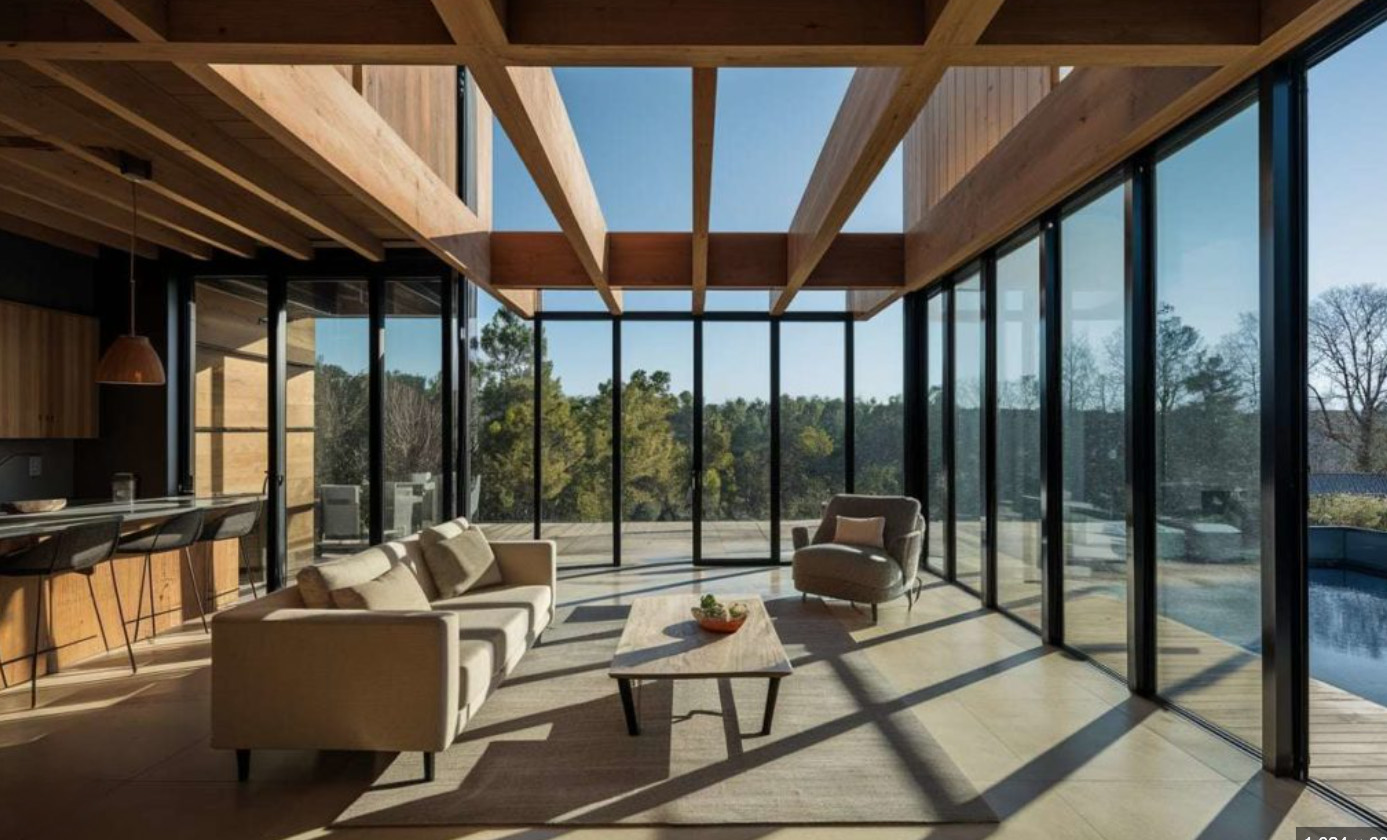
Using Natural Light
sWhile artificial lighting has its place, natural light is unparalleled in creating authentic shadows. Positioning yourself to make the most of available light can lead to stunning results. For instance, capturing the way sunlight filters through a building’s unique architectural elements can produce intricate shadow patterns that enhance the composition. In the shot below I was shooting some Interior Design Photography in Salt Lake City. I waited for sunset and got the warm light streaming in from the bedroom to cast some nice light and pleasing shadows into the main part of the apartment.
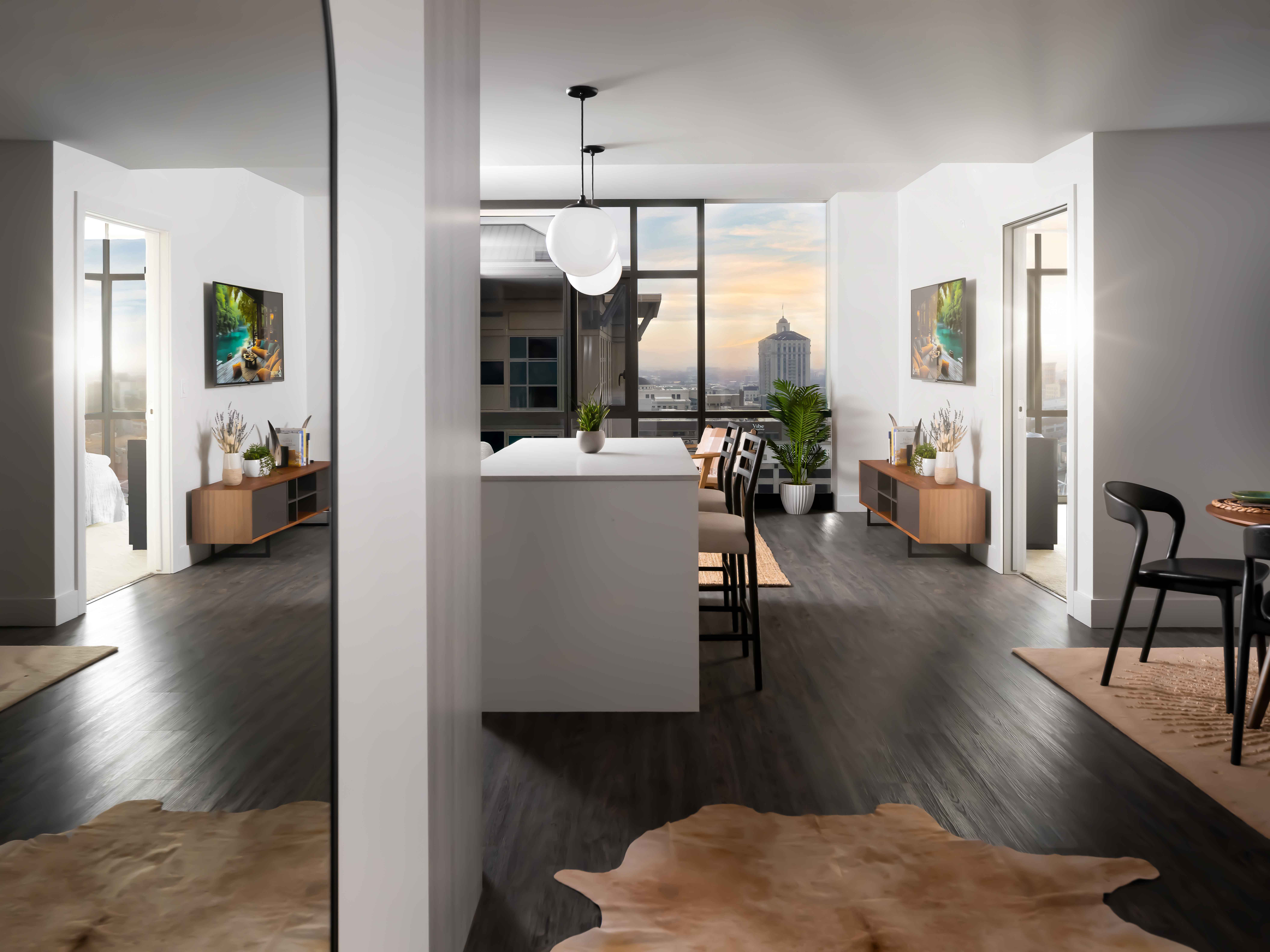
Experimenting with Angles
Don’t be afraid to explore different angles to see how shadows interact with the architecture. Sometimes, an unconventional perspective can reveal a compelling interplay of light and dark. I once photographed a luxury hotel lobby and found that shooting from a low angle emphasized the dramatic shadows cast by the modern chandeliers, adding a sense of grandeur to the image.
Using strobes to create natural light
I use strobes a lot to create natural light.. Let’s face it- when you’re on a shoot and the light isn’t perfect, you have to MAKE IT perfect! It’s taken a lot of trial and error to learn it. But, quality clients expect it, and you have to be able to pull it off even under the most difficult circumstances. One of my favorite photographers is Stephen Karlisch out of Dallas, Texas. I recently completed an online course of Stephen’s where he talks extensively about using strobes to create natural light. One of his most practical tricks is to turn down all the ambient light (with your ISO or shutter) and then fire your strobe so you ONLY see the light coming from it. This becomes your natural key light. Then you bring up your ambient or fill light to help with the rest of the image. It’s a great technique that forces you to make decisions based on the strobe light and makes you shape the feel of the image around it. CLICK HERE to link to Stephen’s work and his courses!
Post-Processing: Enhancing Shadows
In the digital darkroom, subtle adjustments can enhance the shadows in your images. Increasing contrast can make shadows more pronounced, adding depth to the photograph. However, it’s essential to strike a balance to maintain a natural look. Overdoing it can lead to loss of detail in the shadowed areas. To really do this effectively you need to be able to use a histogram correctly and know where your white and black points are in the image.
The Artistic Use of Shadows in Architectural Photography
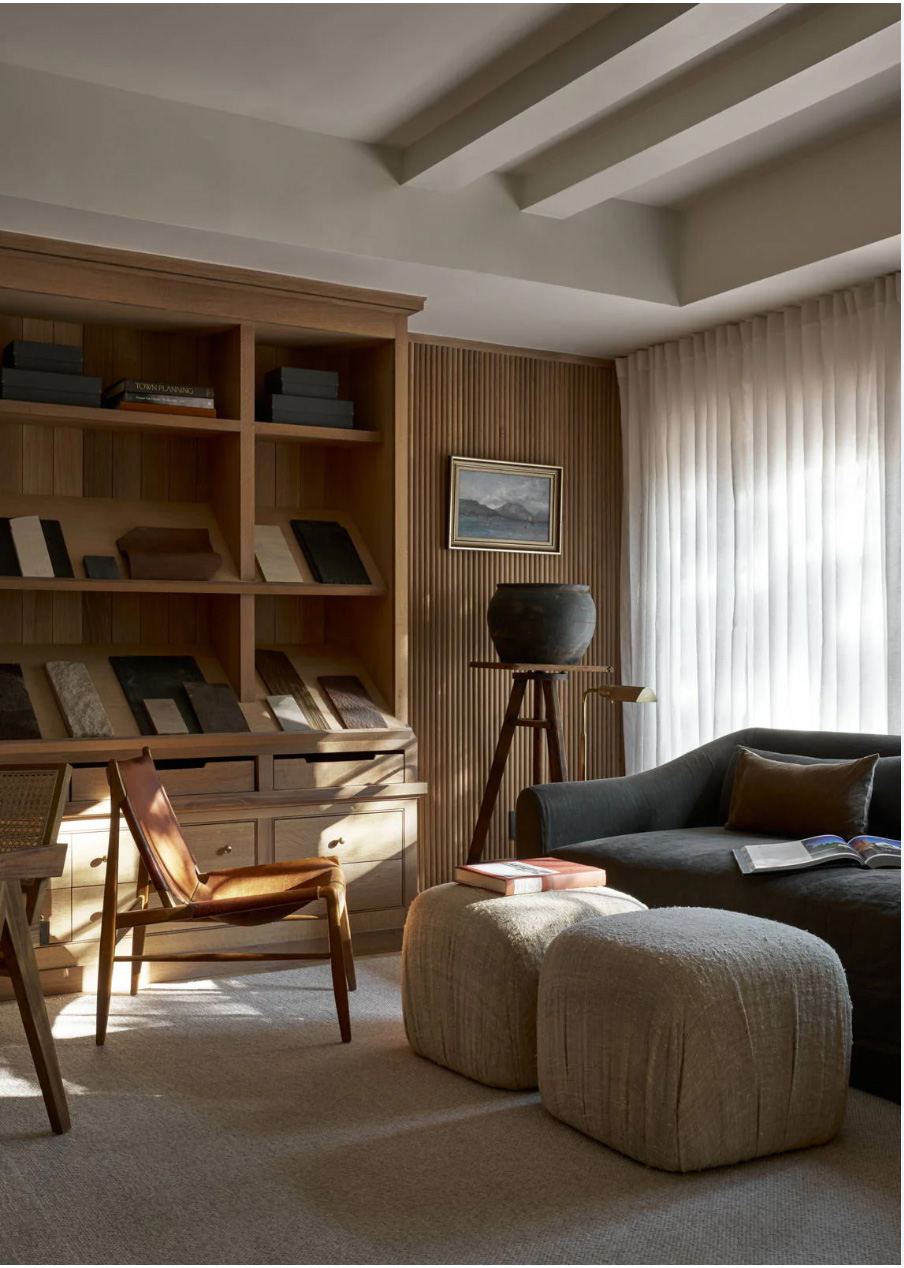
Architectural photography embraces the nuanced interplay of light and shadow to tell a deeper story about design and structure. Here are a few ways shadows enhance the artistic vision:
- Highlighting Textures and Materials: Shadows add realism by emphasizing the textures of different architectural materials.
- Creating Mood and Drama: Whether it’s a soft, inviting shadow or a bold, angular contrast, shadows can alter the emotional tone of an image.
Directing Attention: Shadows help lead the viewer’s eye to specific design elements, enhancing the composition.
Conclusion
While real estate photography aims to present spaces in the best possible light for potential buyers, architectural photography embraces the depth and dimension created by shadows. By thoughtfully incorporating shadows, photographers can create images that are not only visually striking but also rich in narrative and emotion.
